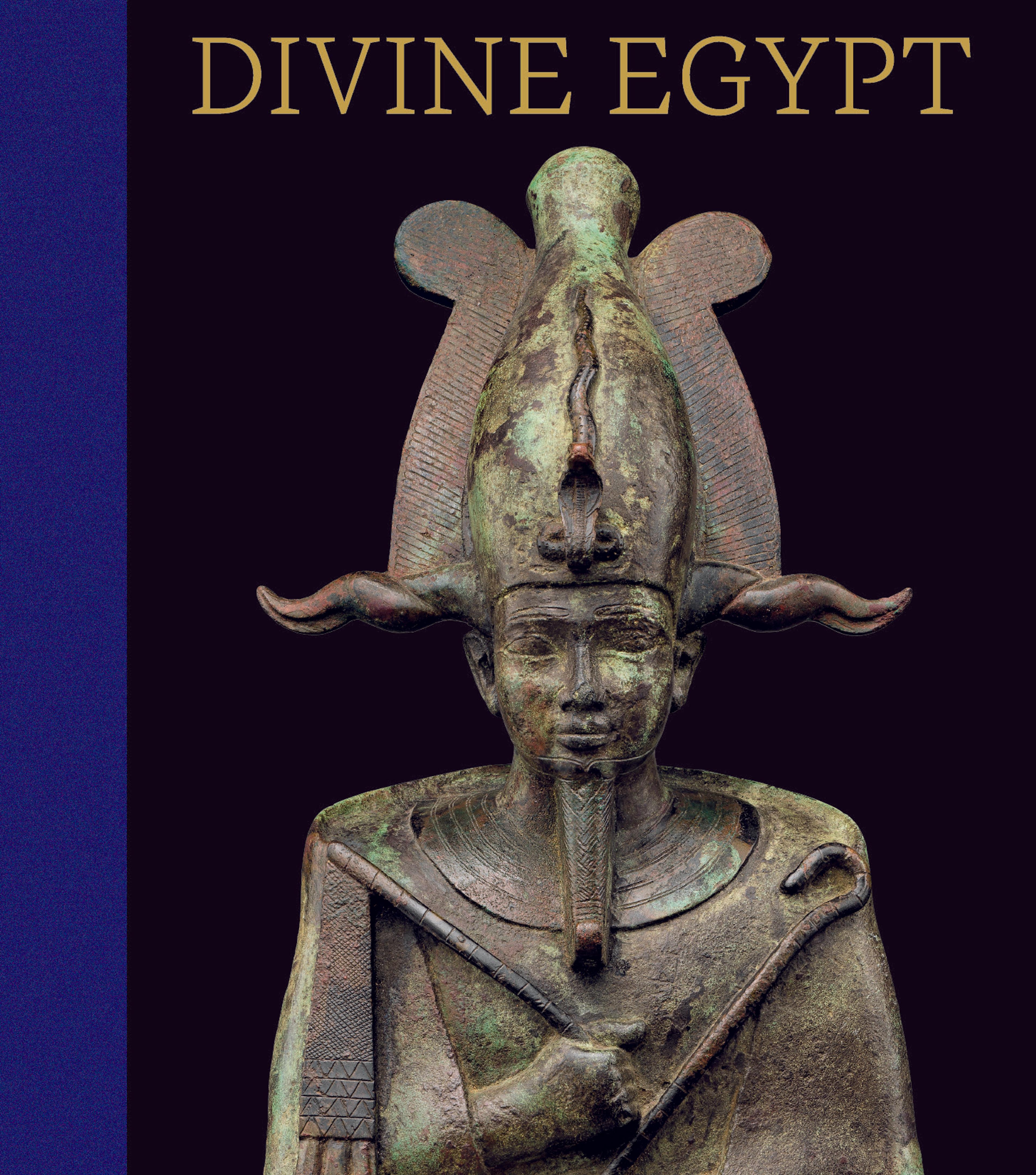Box for a cat mummy inscribed for Bastet
Bastet was a powerful goddess of Lower Egypt, one who was protective and could bring about great prosperity. In zoomorphic form, she was represented as a cat and cats were considered sacred to her. Usually Bastet in cat form is seated upright, like 10.130.1332; this cat is recumbant, a less common but still well attested position. Despite the reclining position, the cat is attentive, as if guarding the length of the receptacle beneath it. The cat wears a necklace with wedjat pendant and a scarab on top of its head, and in general displays a wonderful level of detail, with incised markings on the whole body giving texture and depth to its fur, and inlay giving vitality to its eyes. Banded marks on the tail imitate the ringed tail of a cat. A small square patch of bronze on the rear is an ancient repair of a minor casting flaw.
The cat rests on a hollow rectangular box, which would have originally held an animal mummy. The box is open at the back, where the mummy was inserted. An inscription on the front of the box gives the name of the donor. Such mummy boxes were deposited in catacombs together with other offerings, such as linen-wrapped cat mummies, as at the extensive catacombs at Bubastis and Saqqara.
The cat rests on a hollow rectangular box, which would have originally held an animal mummy. The box is open at the back, where the mummy was inserted. An inscription on the front of the box gives the name of the donor. Such mummy boxes were deposited in catacombs together with other offerings, such as linen-wrapped cat mummies, as at the extensive catacombs at Bubastis and Saqqara.
Artwork Details
- Title: Box for a cat mummy inscribed for Bastet
- Period: Late Period–Ptolemaic Period
- Date: 664–30 BCE
- Geography: From Egypt
- Medium: Cupreous metal
- Dimensions: L. 34.7 × W. 8 × H. 17.6 cm (13 11/16 × 3 1/8 × 6 15/16 in.)
- Credit Line: Rogers Fund, 1912
- Object Number: 12.182.27
- Curatorial Department: Egyptian Art
More Artwork
Research Resources
The Met provides unparalleled resources for research and welcomes an international community of students and scholars. The Met's Open Access API is where creators and researchers can connect to the The Met collection. Open Access data and public domain images are available for unrestricted commercial and noncommercial use without permission or fee.
To request images under copyright and other restrictions, please use this Image Request form.
Feedback
We continue to research and examine historical and cultural context for objects in The Met collection. If you have comments or questions about this object record, please contact us using the form below. The Museum looks forward to receiving your comments.
